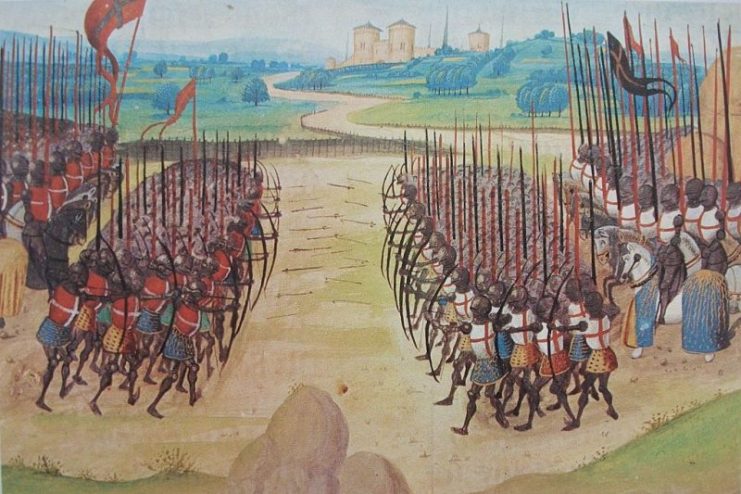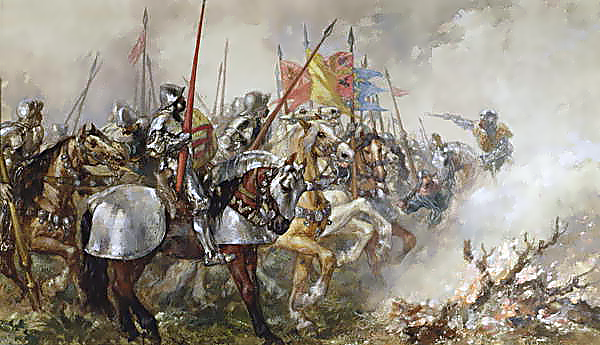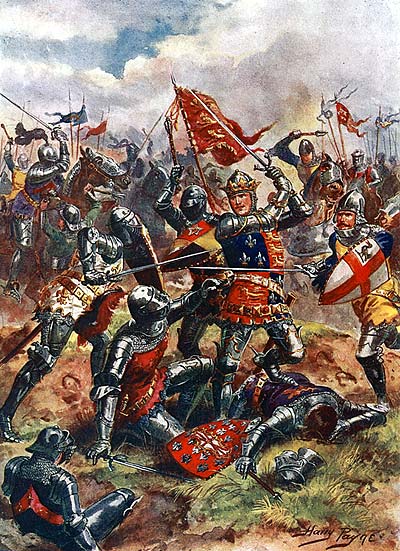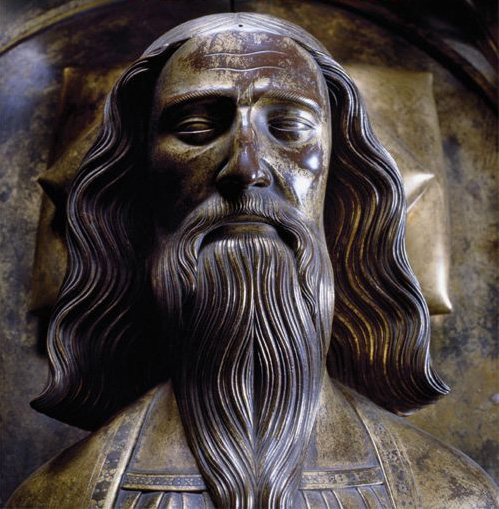Despite the numbers discrepancy, the English combined tactics and superior training to turn what could have been disaster into a resounding and humiliating victory.
The Hundred Years’ War was a long and grueling series of conflicts between England and France over territorial claims on the continent. England laid claim to lands in France while the French monarchy disagreed, thus beginning the war.
The Hundred Years’ War took place during a time of changing European military technology. What started as a war of peasants and knights grew into two nations warring with professional soldiers.
Cannons and early handheld firearms also saw use as both countries sought to use any tactics and methods they could to win the long and bitter conflict.
Of the many battles of the war, the Battle of Agincourt is perhaps the most well known. Immortalized in Shakespeare’s Henry V, the battle provided the English with a crushing victory against the French. The battle clearly demonstrated a new advancement in English and European warfare. It also heralded the birth of giving the finger.

The Battle of Agincourt took place on October 25, 1415. After a difficult siege, the English forces found themselves assaulted by a massive French force. The English numbered roughly 5,000 knights, men-at-arms, and archers.
Meanwhile, the French forces included anywhere from 30,000 to 100,000 men depending on the source, though the lower number is likely more accurate.

Despite the numbers discrepancy, the English combined tactics and superior training to turn what could have been disaster into a resounding and humiliating victory. The keys to their success were the muddy terrain and the infamous English longbow.

The soggy autumn weather created muddy paths that bogged down the heavy French mounted knights. When the French knights impetuously charged the English they became stuck fast in the mud.
This allowed the highly trained English archers to get within 330 yards (300 meters) and shoot the slow moving French forces. The devastating volleys panicked the French, who ended up running headlong into the main English army.
The English longbow proved itself to be the height of bow technology. The arrows fielded a carefully crafted design with the specific purpose of piercing plate. Combined with the devastating poundage of the longbow, the weapon could easily fell an armored knight. Such accuracy and discipline would not have been possible without careful training.

In an age where only the wealthy could afford intensive training, weaponry and armor, the bulk of the soldiers in European armies were either mercenaries or peasant levies. England’s archers were somewhat of an anomaly, with them harking back to earlier times of trained soldiers which wielded their weapons and fought like soldiers instead of frightened serfs or money-obsessed sell-swords.
According to legend, King Edward III said: “If you want to train a longbowman, start with his grandfather.” Quick levying of men-at-arms was unable to meet the exacting training standards of archers, who were typically trained by their fathers to hunt what they could when they weren’t farming.

This intense training gave them skills beyond any other European nation’s archers or crossbowmen. Coupled with their armor-piercing arrows, the English archers proved a decisive force on the field and represented the rebirth of properly trained soldiers on the battlefield.
In another legend, the French, wary of the English longbow after the Battle of Crecy, planned to sneak into the English camp and cut off the index and middle fingers of the archers so they could not shoot their bows. The plan was never enacted though, and at Agincourt the archers raised two fingers to the French in defiance.
The two-fingered version of the middle finger is still considered an incredibly rude gesture in the United Kingdom, as is its one-finger cousin in the United States. In addition to returning soldiering to warfare, the English archers also provided a new form of insult.
